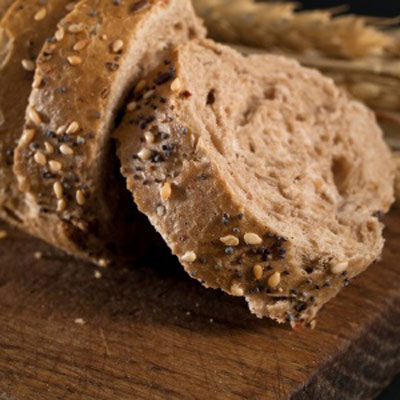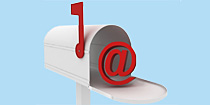 The conversation surrounding breast-feeding versus bottle-feeding usually pegs health benefits against convenience. A less common talking point? The reported pound-shedding effect of nursing your baby.
The conversation surrounding breast-feeding versus bottle-feeding usually pegs health benefits against convenience. A less common talking point? The reported pound-shedding effect of nursing your baby.
Model Alessandra Ambrosio, who had her second child in May, told US Weekly that she attributes her postpartum slim-down to Pilates, spinning, surfing, and…breast-feeding.
Then there’s celebrity trainer Tracy Anderson, who had her second child four months ago and whose clients include lithe mamas Gwyneth Paltrow and Christy Turlington. Anderson recently told the Huffington Post that, when it comes to dropping baby weight, “My number one thing is that I’m a big breastfeeding advocate.” Of course, Anderson also advocates working out once your doctor gives you the green light.
So is breast-feeding the sure-fire way to fit back into your regular clothes? Yes and no. Research does support that breast-feeding can help new moms lose weight, says Tanya Zuckerbrot, M.S., R.D., author of The F-Factor Diet. But it’s not the only way to slim down—we’ll get to that in a minute. First, here’s a science primer.
Why Breast Feeding Can Make You Slimmer
“As far as a caloric burn, it is true that breast-feeding moms do burn 300-500 calories a day,” Zuckerbrot says. But your body requires energy (read: calories) to create breast milk, she says, so doctors typically recommend women eat a few hundred extra calories a day. If a breast-feeding woman loses weight rapidly, it’s usually because she’s not taking in any extra calories.
But Zuckerbrot says that nursing isn’t the golden ticket to a pre-baby body. “A lot of women say it helps with a lot of the weight up front, but the last 10 pounds, if you’re breast-feeding, are very hard to lose.”
The Weight-Gain Equation
What else will help you can help new moms slim down? Not gaining too much weight during pregnancy. Doctors recommend gaining only 25 to 30 pounds, she says, and after childbirth, moms will lose 15 pounds (the weight of the baby, placenta, blood, and fluids).
“It’s understandable for women who only gain those 25 pounds to be back in their skinny jeans two months later because you can lose 10 pounds in two months, whether you’re breast-feeding or not,” Zuckerbrot says.
It’s a lot harder to lose baby weight when women use pregnancy as an opportunity to think that they can eat whatever they want, she says. For instance, if an expectant mom gains 50 or 60 pounds, she’ll have 35 to 45 pounds to lose after childbirth. That’s a tall order—and a poor health choice.
“That weight was not beneficial to a healthy pregnancy,” Zuckerbrot says. “If anything, gaining too much weight could put you at risk for gestational diabetes, an extra large baby—which can lead to complications during delivery—and preeclampsia.”
The New Mommy Eating Plan
Whether you choose to feed your baby by breast or bottle, chances are that you’ll be desperate for energy and maybe you’ll be looking to drop some extra weight. The R.D.’s RX? A high-fiber, high-protein diet.
By combining those two nutrients in every meal, you’ll be using food to stabilize your blood sugar, which will also help stabilize your mood and give you consistent energy throughout the day, she says.
Protein is essential to satiety, plus it will ensure that if you’re losing weight, you’re not losing muscle mass to boot. Since fiber is indigestible, it adds bulk to foods but has no calories. So you can eat a lot of food (specifically, nutrient-rich foods like fruits, vegetables, and whole grains) and feel full without taking in a lot of calories. “If you’re feeling fuller longer, you’re doing less unnecessary snacking between meals and less overeating at the next meal,” Zuckerbrot says.
A note on water: Drinking plenty of water will also help you feel full, and it can help sidestep G.I. issues that might arise with eating a lot of fiber. Plus, breast milk is 50 percent water, so nursing moms need to make sure they’re not getting dehydrated.
Zuckerbrot provided these high-protein, high-fiber meal ideas. Enjoy!
Breakfast
• Parfait: Greek yogurt, high-fiber cereal (look for at least 8g of fiber per serving), cup of berries. (raspberries have 8g of fiber per cup, blueberries have 5)
• Omelet: Egg white omelet filled with your favorite veggies, topped with a little low-fat cheese, served with high-fiber English muffin, whole wheat toast, or high-fiber wrap
Lunch
• Soup: lentil soup with a whole-wheat roll, split pea soup with high-fiber crackers
• Sandwich: Whole grain bread with any lean protein (tuna salad, turkey, roast beef, grilled chicken, tofu)
• Salad: lettuce and vegetables with grilled shrimp, grilled chicken, or canned tuna
Snack (200 calories or less)
• 1 ounce of pistachios and an apple
• Yogurt parfait, if you didn’t eat it for breakfast
• Whole-wheat pita with tomato sauce and low-fat mozzarella
• Toast or crackers with peanut butter and sliced banana
• Pear with almond butter
• Cottage cheese with almonds and fruit
• Smoothie with tofu or yogurt, frozen berries, protein powder, ice
Dinner
Zuckerbrot recommends protein and vegetables—no carbs. “In the absence of carbohydrates is when your body burns fat for fuel,” she says, so shunning carbs at night will help with weight loss. “But for moms who are breast-feeding and the baby isn’t sleeping through the night, you might still want carbs at night so you have more energy.”
photo: Polka Dot/Thinkstock
More from WH:
Fiber: Your Secret Weight-Loss Weapon
Guide to Your Breasts
Self-Checks Every Woman Should Do
 Look Better Naked: Buy the book to learn how to look (and feel!) your very best.
Look Better Naked: Buy the book to learn how to look (and feel!) your very best.
javahut healthy feed
 Reaching for a stick of gum to curb your cravings may do more harm than good: Chewing minty gum before a meal can actually set you up to make less nutritious food choices, according to a new study in the journal Eating Behaviors.
Reaching for a stick of gum to curb your cravings may do more harm than good: Chewing minty gum before a meal can actually set you up to make less nutritious food choices, according to a new study in the journal Eating Behaviors.












 ‘;s_time.prop4 = ‘healthylifestyles|’;s_time.prop5 = ‘{}’;s_time.prop7 = ‘slideshow’;s_time.prop8 = ‘healthcom’;s_time.prop11 = ‘cooking’;s_time.prop15 = ‘gallery’;s_time.prop16 = ‘eating’;s_time.prop28 = ‘health|eating|cooking||page 1’;s_time.prop17 = location.href;if (typeof(catsCSV) == “string”) s_time.prop13 = catsCSV;if (typeof(omnitureHookFunction) == “function”) eval(“omnitureHookFunction();”);var s_code=s_time.t();if(s_code)document.write(s_code)// ]]> Vignette StoryServer 6.0 Mon Aug 20 11:41:40 2012 S
‘;s_time.prop4 = ‘healthylifestyles|’;s_time.prop5 = ‘{}’;s_time.prop7 = ‘slideshow’;s_time.prop8 = ‘healthcom’;s_time.prop11 = ‘cooking’;s_time.prop15 = ‘gallery’;s_time.prop16 = ‘eating’;s_time.prop28 = ‘health|eating|cooking||page 1’;s_time.prop17 = location.href;if (typeof(catsCSV) == “string”) s_time.prop13 = catsCSV;if (typeof(omnitureHookFunction) == “function”) eval(“omnitureHookFunction();”);var s_code=s_time.t();if(s_code)document.write(s_code)// ]]> Vignette StoryServer 6.0 Mon Aug 20 11:41:40 2012 S SweepstakesHealth NewsettersSubscribeHealthy & HappyNews & ViewsFamilyHome and TravelMind and BodyMoneySex and RelationshipsDiet & FitnessFitness • Cardio • Strength • YogaWeight Loss • Diets • Dieting TipsFood & RecipesEating • Cooking • Nutrition • Restaurants and Fast FoodsRecipesBeauty & StyleBeauty • Skincare • Hair • Makeup • StyleCelebrity • Celebrity Tips • Celebrity HealthHealth A-ZAlzheimer’s DiseaseAsthmaBipolar DisorderBirth ControlBreast CancerChildhood VaccinesCholesterolChronic PainCold, Flu, and SinusCOPDCrohn’s DiseaseDepressionDiabetes (Type 2)FibromyalgiaGERDHeadaches & MigrainesIncontinenceMenopauseOsteoarthritisOsteoporosisRheumatoid ArthritisSexual HealthSleep DisordersUlcerative ColitisMore ConditionsMagazineCurrent IssueSubscribeTablet EditionArchiveGive a Gift SubscriptionCustomer ServiceMedia KitAge-Proof Your BonesHome >> Food & Recipes >> Eating >> Cooking >> Dig them out of your jack-o’-lantern or buy them in the store, just be sure to use them in these four delicious recipes. Comments: Add | Read
SweepstakesHealth NewsettersSubscribeHealthy & HappyNews & ViewsFamilyHome and TravelMind and BodyMoneySex and RelationshipsDiet & FitnessFitness • Cardio • Strength • YogaWeight Loss • Diets • Dieting TipsFood & RecipesEating • Cooking • Nutrition • Restaurants and Fast FoodsRecipesBeauty & StyleBeauty • Skincare • Hair • Makeup • StyleCelebrity • Celebrity Tips • Celebrity HealthHealth A-ZAlzheimer’s DiseaseAsthmaBipolar DisorderBirth ControlBreast CancerChildhood VaccinesCholesterolChronic PainCold, Flu, and SinusCOPDCrohn’s DiseaseDepressionDiabetes (Type 2)FibromyalgiaGERDHeadaches & MigrainesIncontinenceMenopauseOsteoarthritisOsteoporosisRheumatoid ArthritisSexual HealthSleep DisordersUlcerative ColitisMore ConditionsMagazineCurrent IssueSubscribeTablet EditionArchiveGive a Gift SubscriptionCustomer ServiceMedia KitAge-Proof Your BonesHome >> Food & Recipes >> Eating >> Cooking >> Dig them out of your jack-o’-lantern or buy them in the store, just be sure to use them in these four delicious recipes. Comments: Add | Read  Credit: Istockphoto
Credit: Istockphoto



 Free Food & Nutrition Email Newsletter
Free Food & Nutrition Email Newsletter
 26 Quick and Tasty Zucchini Recipes2
26 Quick and Tasty Zucchini Recipes2 12 Secrets to Better Orgasms3
12 Secrets to Better Orgasms3 Best Superfoods for Weight Loss4
Best Superfoods for Weight Loss4 Quiz: Do You Have Adult ADHD?5
Quiz: Do You Have Adult ADHD?5 25 Diet-Busting Foods You Should Never Eat6
25 Diet-Busting Foods You Should Never Eat6 The Best Fat-Burning Breakfasts > Take Health magazine with you, try 2 FREE PREVIEW issues Add your commentThe rules: Keep it clean, and stay on the subject or we might delete your comment. If you see inappropriate language, e-mail us. An asterisk * indicates a required field.
The Best Fat-Burning Breakfasts > Take Health magazine with you, try 2 FREE PREVIEW issues Add your commentThe rules: Keep it clean, and stay on the subject or we might delete your comment. If you see inappropriate language, e-mail us. An asterisk * indicates a required field.
